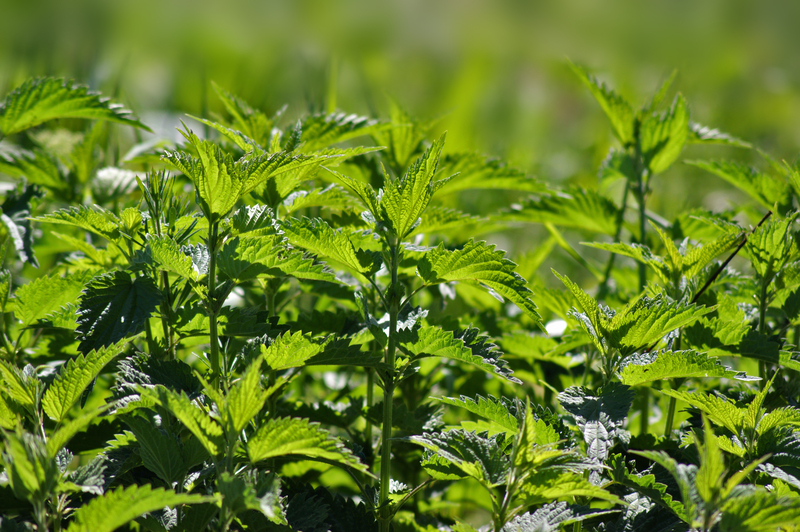Transforming Waste into the Lushness of Soil
Posted on 30/08/2025
Transforming Waste into the Lushness of Soil: A Sustainable Solution
In today's fast-paced world, the volume of waste produced daily continues to balloon at an alarming rate. Yet, amid rising environmental concerns, a powerful opportunity awaits: transforming waste into the lushness of soil. This process not only reduces landfills but also rejuvenates our lands, converts organic material into nature's gold, and supports a greener future. In this comprehensive article, we'll explore innovative methods, benefits, and practical tips on turning "trash into treasure"--creating healthy, fertile soil from materials previously deemed useless.

Why Focus on Waste-to-Soil Transformation?
Land degradation, desertification, and loss of soil fertility have become serious global challenges. Simultaneously, our throwaway culture generates mountains of biodegradable and non-biodegradable waste. By harnessing the magic of soil regeneration from waste, we can:
- Reduce landfill burdens and greenhouse gas emissions
- Restore soil health and boost agricultural productivity
- Promote circular economy by reusing resources efficiently
- Support biodiversity and healthier ecosystems
- Foster community involvement in sustainable practices
Understanding the Types of Waste Suitable for Soil Enrichment
Not all waste is equal when it comes to soil transformation. The best candidates are organic wastes, including:
- Kitchen scraps (fruits, vegetables, eggshells, coffee grounds)
- Yard waste (leaves, grass clippings, plant prunings)
- Cardboard, paper (non-glossy, non-colored)
- Manure from herbivorous animals
- Wood chips and sawdust (from untreated wood)
Items like plastics, metals, and chemically-treated materials should never be added to compost piles or soil-enrichment methods.
The Science Behind Waste Conversion into Rich Soil
At the heart of transforming waste into lush, life-giving soil is decomposition--a natural process powered by a multitude of organisms. Here's how it works:
- Microbial action: Bacteria, fungi, and actinomycetes break down complex organic matter into simpler compounds.
- Worms and insects: Earthworms, beetles, and other soil fauna consume decomposing material and further mix it into the soil.
- Humification process: Organic matter eventually transforms into humus--a stable, nutrient-rich component that greatly boosts soil fertility.
The result is lush, dark soil--often referred to as "black gold" by gardeners--which is teeming with nutrients and beneficial microorganisms, ready to enrich gardens, croplands, or green spaces.
Methods for Transforming Waste into Lush Soil
1. Composting: Nature's Recycling System
The most popular method of converting waste into fertile soil is composting. Through composting, organic materials are broken down into humus over weeks or months. There are several approaches:
- Backyard composting: Perfect for households. Using a simple bin or open pile, kitchen and yard wastes are layered, kept moist, and turned occasionally for aeration.
- Vermicomposting: Involves earthworms (usually red wigglers) to speed up decomposition and produce a special "worm castings" compost, which is highly valued for its soil-enriching qualities.
- Bokashi composting: An anaerobic fermentation method that pre-processes food waste (including dairy and meat) into a nutrient-rich mass for further composting or direct soil application.
- Compost tumblers: Enclosed drums that can be spun to provide even aeration and faster breakdown.
No matter the method, the principles remain the same: balance your "greens" (nitrogen-rich) and "browns" (carbon-rich), keep it moist (not soggy), and allow air to circulate.
2. Mulching: Protecting and Enriching the Earth
Another effective method is mulching--spreading organic waste materials such as leaves, grass clippings, or straw over soil surfaces. Mulch can:
- Moderate soil temperature
- Suppress weeds
- Conserve moisture
- Gradually decompose, releasing nutrients directly into the soil
3. Sheet Composting
Sheet composting, or "lasagna gardening," involves layering organic waste directly in the garden bed. It's an easy, no-dig approach:
- Start with cardboard or newspaper (to suppress weeds)
- Layer greens (e.g., kitchen scraps) and browns (e.g., dried leaves)
- Cover with soil or finished compost
Over time, the layers rot down and invite soil life to flourish, transforming the waste into lush garden beds.
Community and Industrial Scale: Expanding the Impact
Community Composting Initiatives
Cities worldwide have begun to recognize the value of converting food and yard waste into fertile compost. Community composting programs collect organic material household by household, turning mountains of waste into a communal resource. These efforts:
- Divert waste from landfills
- Provide free or low-cost compost to residents
- Educate citizens about sustainability
- Build local green jobs
Industrial-Scale Waste-to-Soil Projects
Large-scale composting facilities utilize advanced technologies--including temperature control, forced aeration, and mechanical turning--to process agricultural, food processing, and municipal organic waste streams into high-quality compost or soil amendments.
In some regions, biochar production has emerged as another promising method. By heating organic waste in low-oxygen conditions (a process called pyrolysis), we create biochar--a stable, charcoal-like substance that dramatically boosts soil structure, water retention, and carbon storage.
Benefits of Turning Waste into Soil Lushness
1. Improved Soil Fertility and Plant Health
Compost and other organic amendments enrich the soil with essential nutrients (nitrogen, phosphorus, potassium). They increase soil organic matter, enhancing water retention, root development, and resistance to disease. Plants grown in compost-rich soils are naturally more robust and productive.
2. Environmental Protection
- Lower greenhouse gas emissions: Organic waste decomposing in landfills releases methane--a potent greenhouse gas. Composting is aerobic, drastically reducing methane emissions.
- Soil regeneration: Amending poor soils with compost reverses degradation, prevents erosion, and improves land for agriculture and habitat.
- Waste reduction: Each ton of organics diverted from landfills directly reduces environmental pollution.
3. Economic Savings and Opportunities
- Reduced need for synthetic fertilizers (which are fossil-fuel intensive and polluting)
- Creation of job opportunities in waste processing, compost production, and distribution
- Lower landfill management costs for municipalities
4. Enhanced Biodiversity
By spreading compost and organic mulch, soils become habitats for vast communities of bacteria, fungi, earthworms, and insects. This creates a thriving ecosystem above and below ground, supporting everything from pollinators to birds and small mammals.
Best Practices for Home Waste-to-Soil Transformation
Create Your Own Compost System
- Choose a location: Shady, well-drained spots are ideal.
- Build or buy a bin: This keeps the compost tidy and deters pests.
- Add materials: Alternate nitrogen-rich ("green") and carbon-rich ("brown") materials. Chop larger items for faster breakdown.
- Keep it moist: Like a wrung-out sponge--neither too dry nor soggy.
- Turn regularly: Aerates the pile, speeding down decomposition and reducing odors.
- Harvest when ready: Finished compost is dark, crumbly, and earthy-smelling.
Avoid Common Mistakes
- Don't compost meat, dairy, or oily foods (unless using specialized systems)
- Avoid using chemically-treated woods, pet or human waste
- Chop or shred tough materials (branches, corn cobs) for quicker breakdown
- Maintain a balanced ratio of greens (e.g., food scraps) to browns (e.g., leaves, cardboard)
- Guard against adding invasive plants or weed seeds
Exciting Innovations in Waste-to-Soil Technologies
1. Smart Composting Sensors
Emerging devices can monitor moisture, temperature, and gas output, ensuring optimal composting conditions and higher quality soil with less guesswork.
2. Black Soldier Fly Larvae Processing
These insects are now used to quickly consume food waste, turning it into both excellent compost and high-quality animal feed. Black soldier fly composting is gaining traction for larger agricultural operations looking to close the waste-to-soil loop.
3. Community Biochar Production
Mobile biochar kilns allow small farms and communities to process woody waste into biochar on site. This not only keeps waste out of landfills but also adds a powerful soil enhancer to local grounds.
4. Integrated Anaerobic Digestion
Anaerobic digesters convert organic waste into biogas for energy and nutrient-rich digestate, which can be safely applied as a soil amendment, promoting the dual benefit of waste reduction and renewable energy production.
The Role of Policy and Community Education
Transforming waste into the lushness of soil is not just a matter of technology--it's about culture and policy. Progressive municipalities implement policies that incentivize household and commercial composting, provide educational resources, and ban organics from landfills.
- Local governments invest in public compost drop-off sites and collection services.
- Non-profits offer training workshops and "compost ambassador" programs.
- Schools integrate composting and soil health into science curricula.
Such efforts are essential to mainstreaming waste-to-soil practices and scaling their environmental and economic benefits.

Getting Started: Transforming Your Waste, Enriching Your Soil, Healing the Planet
In summary, transforming waste into the lushness of soil offers a practical, accessible, and profound way for individuals, communities, and industries to anchor sustainability in everyday life. At its core, this is a return to natural cycles--where what was once considered "waste" is instead recognized as the foundation of regeneration, abundance, and hope.
- Start small with a kitchen compost bin, and watch your garden thrive.
- Support local composting and recycling initiatives.
- Educate friends, family, or neighbors about the benefits of waste-to-soil transformation.
- Advocate for policies that reduce landfill and support healthy soils.
By making conscious choices, every one of us can become stewards of our soil, architects of lush landscapes, and champions of a waste-free world.
Conclusion: A Greener Future, Rooted in Healthy Soils
As the world seeks solutions to environmental degradation and waste management, turning waste into fertile soil emerges as a beacon of hope. This journey--filled with science, community engagement, and practical action--is both ancient and forward-looking. Let us continue to foster the lushness of our earth by transforming our waste into a flourishing, living resource for generations to come.
```
